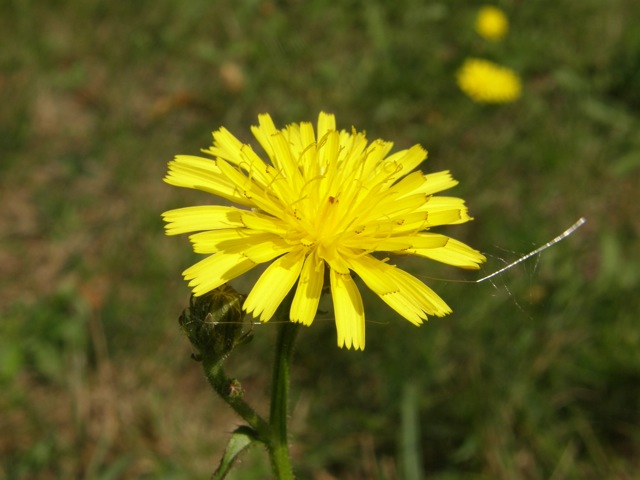Asteraceae, the daisy, sunflower, or composite family.
Description:
Plant:
Firm, more or less hairy, branching stems, rising 1'-3', with leaves throughout,
(though the plants are often mostly stems),
topped by groups of dandelion-like yellow flower heads. Perennial.
Flowers:
Yellow heads consisting solely of ray flowers, 1"-1.5", in loose groups
on top of branching stems. Involucral bracts overlapping and of varying
lengths.
Leaves:
Narrowly ovate to laceolate, with widely spaced teeth, 1"-4", stemless
(sessile) or nearly so.
Fruit:
Dry seed-like achene with silky hairs.
Blooming:
June-October
Habitat:
Fields, roadsides, waste areas.
Comments:
The genus Hieracium (the hawkweeds) is extremely complex,
and classification is difficult and not well standardized.
There are over 9000 species and subspecies names in the literature.
Current thought is to consolidate the genus into a smaller number of
variable and hybridizing groups, but there does not seem to be a consensus
on just how to do it.
In our area there are several similar species, both native and
introduced. The pictures here seem to be one of the native species,
probably H. canadense or one of many species names now considered
synonymous.
The overlapping involucral bracts, and presence of non-basal leaves distinguish
it from the most common European import H. pratense.
The common name goes back to the ancient Greeks who had a story that
hawks ate the plant to improve their eyesight.
Where to find it:
In just about any open area of the park.
